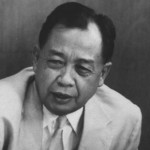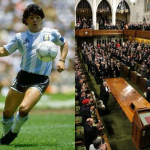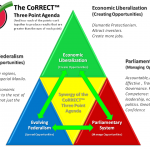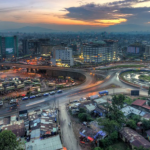PDP-Laban Draft Executive Summary
Wikis > PDP-Laban Draft Executive Summary
[The Constitution of the Federal Republic of the Philippines]
The PDP Laban Model of PH Federalism: An Executive Summary
The Philippines has a unitary system of government by an accident of history. The Spaniards and Americans who colonized our country saw that that fastest way to subjugate the native peoples was to set-up a highly-centralized system with Manila as the imperial capital. Despite the archipelagic nature of the country inhabited by diverse cultures, the unitary system was carried over even when the Philippines gained its independence and became a Republic in 1946.
Through time, the disadvantages of a unitary system became apparent in the country. The system concentrated political and economic power in the “center” and thus, development was limited in areas close to Manila and stifled elsewhere. Not surprisingly, in a country of more than 100 million people, sixty two per cent (62%) of the country’s GDP comes from Metro Manila, Central Luzon, and CALABARZON while the rest of the country is suffering from underdevelopment and low investment. Our system of government has resulted in a grave imbalance in the distribution of resources among regions and local government units. Unfortunately, this inequality has led to social unrest, with various groups (especially in Mindanao) arming themselves to fight against the system. Clearly, there is a need for change.
The problem, we submit, is our highly-centralized form of government and the solution, we believe, is the adoption of the federal system. We believe that the only way to bring about equitable and widespread development in our country is for the central government to share power – political and economic – with the regions and LGUs.
The unprecedented assumption to power of President Rodrigo Roa Duterte and his political party, PDP Laban, has given the country a rare opportunity to introduce systemic change to our country’s system of government, among other Constitutional Reforms. The solution advocated by PDP Laban since 1982 is to abandon the unitary system and shift to a Federal system of government. Federalism, a system of governance, has been adopted by many nations in the world such as the United States, Germany, Malaysia, and Australia to keep their countries strong and progressive while allowing the different communities within their country to work together for the progress of all.
As a political think tank, the PDP Laban Federalism Institute has been studying and advocating for Federalism in the Philippines. In July of last year, the Federalism Study Group[2] composed of various political scientists, lawyers, politicians and practitioners was convened by the Institute under the direction of Senate President Aquilino “Koko” Pimentel III. The group was tasked to study various federalism models from around the world, determine what model would be best for our country, and propose the necessary amendments to the Constitution.
In proposing amendments to the Constitution, the Federalism Study Group approached this task based on the following principles:
-
There is no “one size fits all model” of Federalism. Federalism scholars contend that there are as many federal models as there are federal countries; every federal country has a distinct model that works best for its own country. Countries who wish to shift to a federal system – like the Philippines — must discern its own version of federalism according to the peculiar conditions of their societies. Therefore, it is important to learn from the experiences – whether good or bad – of existing federations.
-
There is a different context to Federalism in the Philippines. Many of the established federations in the world like the US and Australia examples of “coming together” federalism, meaning they were independent states that decided to bond together. We, on the other hand, will be an example of a “holding together” federalism, because we are already a unitary state seeking to shift into a federation. Thus, many of the standard features of federal countries like “shared sovereignty” between the federal and regional governments do not apply to us because of our different context.
-
There is no need to come up with an entirely new Constitution. The 1987 Constitution has many good provisions that need not be changed. Thus, we have taken a “surgical” approach towards amending the fundamental law, concentrating only on the articles and provisions that would enshrine federalism into the Constitution and strengthen our public institutions, among others. Thus, there are articles in the 1987 Constitution that are left practically untouched such as Articles on the Bill of Rights, Citizenship, and Suffrage, among others.
It is essential that we continue to strengthen our democracy not by supplanting or doing away entirely with the 1987 Constitution but by improving the current Constitution, the charter that allowed us to abandon Marcos authoritarianism and move forward. In doing so, we ensure Constitutional continuity and stability while at the same time make adjustments in our charter to address the needs of the present and the future.
The PDP Laban Model of PH Federalism being proposed herein draws lessons from other countries but is customized to our own needs and circumstances. The foundational ideas were provided by the ideologues of Federalism like Sen. Aquilino “Nene” Pimentel Jr., the founder of PDP Laban and father of the Local Government Code. We also took into account the salient features outlined by our Party Chairman, President Rodrigo Duterte. We studied our 25-year experience of devolution under the Local Government Code, our 20-year experience with ARMM, as well as many models of Federalism, Decentralization, and political arrangements from around the world.
Some of the salient features of the proposal includes a shift to a Federal Government with a Semi-Presidential System or a Hybrid Parliamentary System similar to the governments in Taiwan, South Korea, Portugal and to a certain extent, France. It also features a transition mechanism for Regional Governments to prepare themselves for further decentralization, provisions to strengthen political parties, mechanisms to regulate political dynasties, and other political and electoral reforms.
PH Federal System. There shall be two Constitutionally-established orders or levels of government – the Federal Government and the Regional Government. Unlike the present system where there are overlapping mandates between the National Government and Local Government Units (LGUs), each level of government in the Federal structure will have its particular jurisdiction. The Federal Government shall have exclusive legislative powers over National Defense, Police and National Security, Foreign Affairs, Currency, Immigration, and other matters that concern the entire nation.[3] In addition, all residual powers are retained by the Federal Government but these may be delegated to the Regional Governments.
The creation of Regional Governments are guided by the principles of Autonomy, Subsidiarity, Solidarity, Decentralization and Devolution, Democracy and Accountability. Basically, since local governments are closest to the people, they are the ones who are best equipped to deliver basic services to the people. Those basic services, however, that are best delivered under a national standard shall be a shared power[4] between the Federal and Regional Governments. We propose the creation of 11 regional governments the composition of which shall be attached as an ordinance to the Constitution.[5]
Regional Governments shall have primary legislative powers over basic services such as Social Welfare and Development; Tourism; Irrigation, Water and Sewerage; Waste Management; Fire Protection; Regional Development Planning; Franchises, Licenses and Permits; and the allocation and provision of funds and resources to local Governments within the Region, among others.
Semi-Presidential System. It is proposed that our current Presidential System which concentrates executive power in a single office, the Presidency, be replaced with a semi-presidential or hybrid parliamentary system where executive power is dispersed among the President, the Prime Minister, the Cabinet, the Parliament and the Regional Governments.
The logic for this division of executive powers in the context of the Philippines are as follows: First, in the transition to a more decentralized system of governance, we need a popularly elected presidency to hold and unite the country together and ensure that the transition to federalism and transfer of powers to the regions will be successful. The President can help as an arbiter of disputes between the federal and regional governments and among regional governments.
Second, we need an effective president to deal with powerful countries like China and the United States, as well as to effectively compete in a globalized world economy; Third, we need a president who can decisively address the numerous national security problems and natural disasters; Fourth, a pure parliamentary system without strong political parties can be unstable. It will take time to build strong political parties. We need a president to ensure that there is no gridlock in our political system and a president who can remain decisive in cases of national crises;
Finally, having a president, a prime minister, a cabinet and regional chief ministers will help spread out the burdens of governance, avoid a single issue agenda and, most importantly, help speed up regional development by giving more powers to the regions, which is the main objective of our reform. More horses pulling the national and regional wagon together is better than one.[6]
Therefore, we propose both a President and a Prime Minister for our country. The President, who is nationally elected, shall be the Head of State. He/she will be the symbol of the nation and the decisive leader in times of crisis. He/she will be primary responsible for the country’s National Defense and Foreign Affairs. The President can veto acts of Parliament, appoint members of the Judiciary, nominate and with the consent of the Federal Assembly, appoint the Prime Minister and he/she can dissolve the Federal Assembly depending on certain conditions, and call for new elections. Given these powers, the President will be insulated from day-to-day politics and act as an “elder statesman.” The President is given a maximum of two 5-year terms.
The Prime Minister, on the other hand, shall be the Head of Government and he shall now handle the day-to-day affairs of government. It is now the Prime Minister who will set domestic and economic policy and control public finances. He/she should be a member of the majority party or ruling coalition in the Federal Assembly in order to be appointed by the President as Prime Minister. He/she is responsible for the program of Government and determines the guidelines of national policy, appoints members of his/her Cabinet and other officials except those appointed by the President, and prepares the National Expenditure Program and submits it to the Federal Assembly for approval.
The Parliament. It is proposed that the present Bicameral legislature be retained but with different names, powers, and functions. Legislative power shall be vested in Parliament which shall have two houses or chambers – the Federal Assembly and the Senate.
Under the hybrid Parliamentary system, primary legislative power is vested on the Federal Assembly which will be composed of 400 members – 60% elected by plurality votes in Legislative Electoral Districts and 40% elected through the Proportional Representation system of accredited national political parties.[7] The Federal Assembly shall have the power to initiate legislation which shall go through the mandatory 3-readings. The Prime Minister shall also come from the Federal Assembly together with the Cabinet, a majority of which shall come from the Assembly.
The Senate shall now be elected by region just like in other Federal countries. In the exercise of its legislative powers, the Senate shall concur on all bills and resolutions passed by Federal Assembly before it becomes law. But in order to avoid the duplication of functions between the two chambers and to streamline the legislative process, the 3-reading rule shall no longer apply to the Senate. One reading shall suffice. Moreover, it cannot initiate legislation. The power of the Senate shall be limited to the review of bills passed by the Federal Assembly.[8]
Instead of a bicameral Commission on Appointments, it shall now be the Senate who shall confirm appointments made by the President and Prime Minister to the Cabinet (except when the nominee is a member of Parliament) and to other positions (e.g. Constitutional Commissions) that require confirmation. The Senate shall continue to act as the Impeachment Court; approves treaties and international agreements, and screen and nominates appointments to the Judiciary instead of the Judicial and Bar Council.
There shall be 3 senators elected from each Region. Both the Senators and the Members of the Federal Assembly shall have a maximum of two 5-year terms.
Transition Mechanism to a Federal System. For federalism to succeed there must be serious consideration to a smooth transition mechanism. We should learn from the painful experience we had with the devolution of health services et. al. under the 1991 Local Government Code where no smooth transition mechanism was put in place. Since the shift to a federal system will impact on practically all government agencies and levels of government, the transition must be slow, deliberate and purposeful.
It is proposed that there be a three-step process in the transition process. This is important to ensure the capability and readiness of the Regional Governments and their constituent Local Government Units to take on the devolved powers and responsibilities from the Federal Government. The transition mechanism will also give Parliament the time needed to amend national laws as well as enact complementing legislation.
Step 1: Regional and Local Government Code (RLGC). Eighteen months from the ratification of the amendments to the 1987 Constitution, a Regional and Local Government Code shall be enacted by Parliament to replace the 1991 Local Government Code. The RLGC shall define the powers, functions, and responsibilities of Regional Governments and their constituent LGUs. The Code shall also provide the taxing powers and other sources of funds of the Regional and Local Governments. And it shall provide for the creation of an Equalization Fund which shall replace the Internal Revenue Allotment (IRA).
Step 2: Regional Commissions. Once the Regional and Local Government Code is passed, the Regional Governments are deemed created. But in order to save on government resources and do away with the need for new elections for Regional positions, the Regional Governments in the interim shall be governed through Regional Commissions. Each Regional Commission shall be composed of the incumbent Governors of Provinces and Mayors of Highly Urbanized Cities and Independent Component Cities within the Region. The chairmanship of each commission shall be by rotation among its members for a term of one-year term. The organizational structure and operations of the commissions shall be defined by the Regional and Local Government Code.
The Regional Commissions shall serve as the interim Regional Government acting as a collegial body with both executive and legislative Powers. A Regional Chief Administrator who is a professional manager appointed by the Commission En Banc shall act as the Chief Executive Official tasked with running the day-to-day operations of the Regional Government. The Commission shall create and organize the government offices necessary for the effective and efficient functioning of the Regional Government.
The rationale behind the establishment of a Regional Commission as the Interim Regional Government are as follows: Firstly, it will reduce the cost of establishing the regional government as the commissioners are already receiving their salaries from their respective LGUs; Secondly, the regional government can operate right away without the need for new elections which takes time and entails cost to government; Thirdly, it allows the constituent units to determine the agenda of the regional governments until such time that region can transition to a regular regional government through an Organic Act.
Step 3. Regional Organic Act. Within 5-10 years from the establishment of the Regional Government, the Regional Commission shall submit to Parliament for approval a proposed Regional Organic Act more responsive to the needs, culture, and aspirations of the region. The Act shall define the basic structure of government for the region consisting of an Executive Department headed by a Chief Minister and a Regional Assembly composed of elected representatives from each province and city. The regional chief executive called Chief Minister shall be elected by the Regional Assembly from among its members. Once the Regional Organic Act is approved by Parliament, the Regional Commission shall transfer its powers and functions to the Regular Regional Government.
Fiscal Reforms. Changes in the allocation of funds to the regions are at the heart of the shift in the system of government. The unequal distribution of public funds to the regions is one of the major causes of underdevelopment in the country. We will pursue the principle that the budget shall follow the division of powers; which means that the regions should be given the necessary funds to properly exercise the powers devolved to them.
At present, 83% of national government revenue are controlled by the national government and only 17% are allocated to local governments. Under our formula, this will change in favor of regional governments: 60% to be controlled by the Regional Governments and only 40% by Federal Government.[9]
Political, Electoral and Other Reforms.
For Federalism to succeed, it should come with a package of electoral and political reforms. We believe that federalism can fail if we do not institute changes in our political and electoral system.
In order to democratize political power, we propose to make the anti-dynasty provision in the Constitution self-executing. It is proposed that relatives of incumbent politicians up to the 2nd degree of affinity or consanguinity shall be prohibited from running for public office in the territorial jurisdiction where the incumbent was elected.
In order to establish strong and cohesive political parties, Parliament shall be mandated to promote the development of political parties as public institutions that shall serve as a mechanism for communication and cooperation between the people and the government, facilitating political organization and representation.
To support this initiative, political turn-coatism shall be prohibited. Party switching shall be banned within 1 year immediately preceding or following an election, otherwise he loses his position and shall be prohibited from running in the next election. It is also proposed that state subsidy shall be provided to political parties based on their electoral performance in the previous election just like they do in mature democracies. This is to reduce or all together eliminate the influence of big business and drug and gambling lords in our politicians.
The current party list system is also proposed to be improved and transformed into a system of proportional representation. The 3-seat cap will be removed in order ensure that the ruling party is able to muster a majority and ensure a stable parliamentary system.
As to the restrictive economic provisions in our current Constitution, we propose that we delegate to Parliament the matter of fixing the percentage of allowable foreign ownership in nationalized economic activities. Land ownership in the country, however, shall be reserved only for Filipino citizens.
Since corruption is still a curse devastating our country, we shall continue to strengthen the Ombudsman, Sandiganbayan, and the Commission on Audit and make them a strong presence in every Region.
Our Last Hope. As argued by President Duterte, it is our firm believe that the next logical, and perhaps the only peaceful, legal and constitutional avenue left open to those who wish to lay down the foundations for a just and lasting peace and development not only in Mindanao but in the entire country is the adoption a federal system of government.
In conclusion, we do not see federalism to be the cure-all to all our problems. In fact, there is no cure-all to all our nation’s ill. Federalism is not a perfect system; but it may be the answer to the country’s lingering problems rooted in our country’s multi-cultural federal nature. Maybe it is time to recognize the Filipino identity as a “diversity of identities” and not one single monolithic artificial construct. We submit that it is the recognition of differences that make communities prepared to embrace a common identity with others. The time for change is now.
xxx
[1] By Jonathan E. Malaya, Executive Director, PDP Laban Federalism Institute
[2] Members: Dean Dr. July Teehankee (DLSU), Assoc. Prof Dr. Ed Araral (Lee Kuan Yew School of Public Policy), Prof. Ed Tayao (LOGODEF), Dr. Tony Avila, Dir. Novel Bangsal (CPBRD, HRep), Atty. Valery Brion (Office of the Senate President), Dir. Mon Casiple (IPER), Dr. Grace Jamon (UP Diliman), Mr. Francis Manglapus (CAPDI), Dr. Edwin Martin (ASPAP), Dir. Gen. Jun Miral (CPBRD, HRep), Mr. Raphael Montes (CLRG, UP NCPAG); Sec. Gary Olivar (FEF), Atty. Al Oxales (O/Senate President), Atty. Salma Rasul (PCID), Atty. Vince Revil (PDP Laban), Sec. Gary Teves (FEF), Mr. RV Vicerra (CDPI), Mr. Jojo Villano, Mr. Orion Perez Dumdum (CoRRECT™ Movement) and Federalism Institute Director Jonathan Malaya.
[3] Other functions under the iurisdiction of the Federal Government includes: Currency and Monetary Policy; Customs and Tariff; International Trade; Inter-regional Commerce; Postal Service; Quarantine; Citizenship, NaturaIization, Immigration and Deportation; General Auditing; National Elections; Maritime, Land and Air Transportation and Communication; Patents, Trademarks, Trade Names and Copyrights, Energy, Judiciary, and the Administration of Justice.
[4] In the case of basic education which is proposed to be a shared power, the Federal Department of Education shall set the curriculum, minimum standards and conduct assessment and testing of all basic education institutions while the Regional Governments can handle classroom construction, creation of teaching items, provision of school furniture and equipment, etc.
[5] This follows the proposal of Senator Nene Pimentel. Nonetheless, the number and composition of these regional governments shall be subject to extensive consultation with the people on the ground, thus, we will leave this matter for the Constitutional Convention or Constituent Assembly to finally settle.
[6] Dr. Ed Araral, Vice Dean, Lee Kuan Yew School of Public Policy, National University of Singapore
[7] The Proportional Representation or PR system will improve on the current Party-list system we have under the current Constitution.
[8] This power is referred to in Parliamentary democracies as Consent Legislation. Which is not to say that the Senate cannot propose a bill or resolution. It can still do so but not in its chamber. Any senator may submit a proposed bill or resolution to the Federal Assembly who shall act on it consistent with its rules.
[9]The Federal government will remain responsible for the national debt.

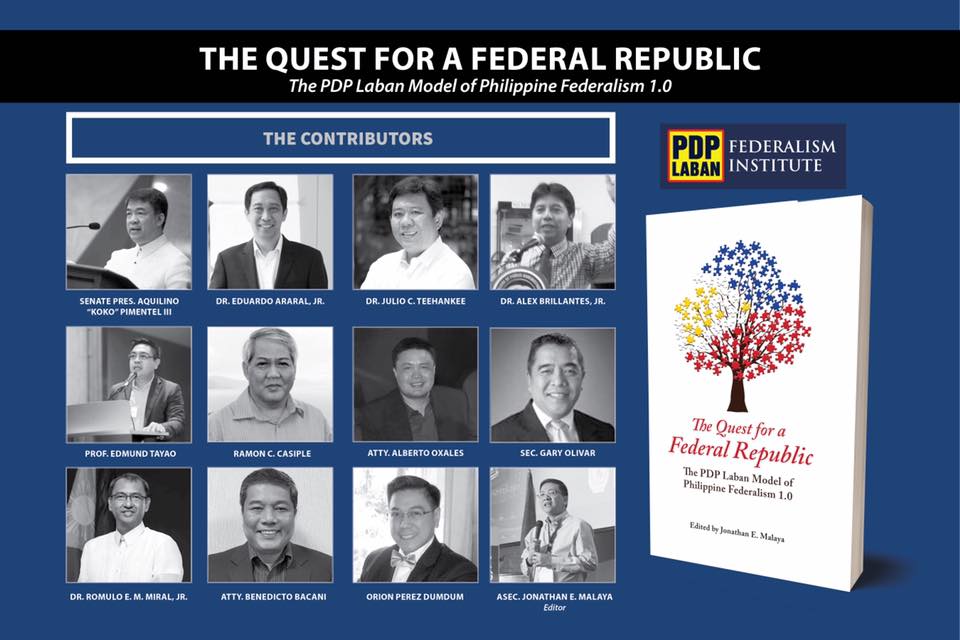



 I believe: This is a CoRRECT™ Video with a very positive message
I believe: This is a CoRRECT™ Video with a very positive message Walang Natira: Gloc-9's MTV Rap about the OFW Phenomenon
Walang Natira: Gloc-9's MTV Rap about the OFW Phenomenon



